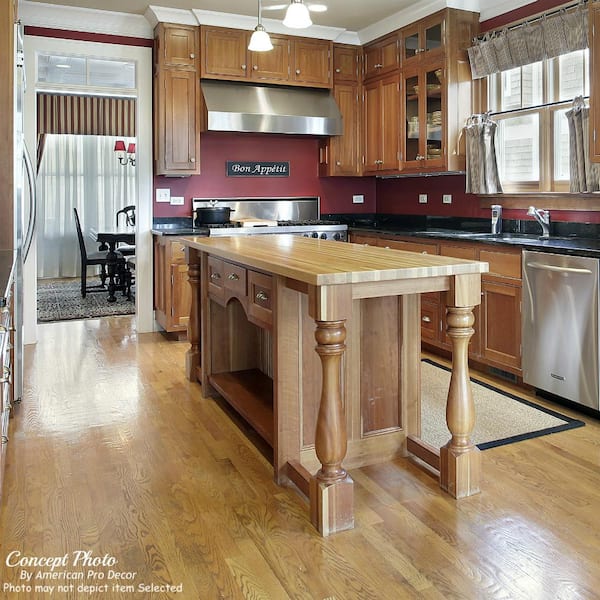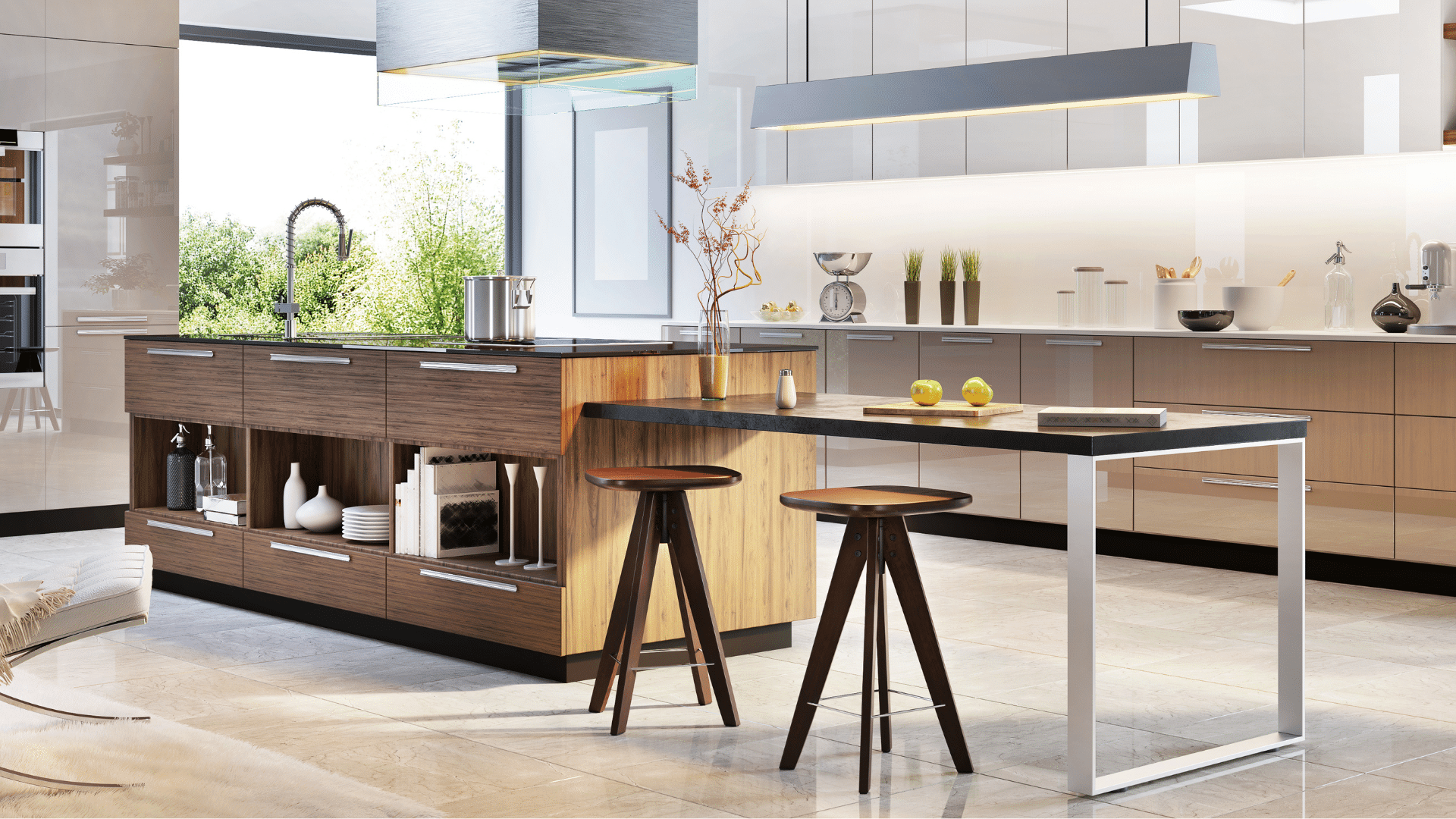Custom Kitchen Island Legs to Suit Your Kitchen Visual
Custom Kitchen Island Legs to Suit Your Kitchen Visual
Blog Article
Essential Tips for Choosing the Perfect Eating Table for Your Cooking Area
Selecting the best table for your cooking area is greater than simply an issue of taste; it requires a comprehensive understanding of your space and needs. Begin by measuring your offered space to guarantee sufficient clearance for motion. The form of the table plays a pivotal duty; while rectangular tables match larger areas, round ones foster intimacy, and extendable alternatives offer flexibility. Material option is just as vital, with hardwoods offering longevity and glass lending a contemporary touch. The table ought to harmonize with your cooking area's looks and accommodate your family members easily. What other variables might influence this vital choice?
Action Your Space
Choosing the optimal eating table starts with a precise analysis of your available area. This fundamental step makes sure that the table not just fits comfortably within the space yet likewise enhances the overall format and performance of your eating area. Begin by determining the dimensions of the area, taking into consideration entrances, windows, and any kind of existing furniture. This will certainly aid you determine the maximum allowed size for your table.
It is important to leave sufficient area for chairs to be pulled out and for people to move around the table without blockage. A basic regulation of thumb is to permit at least 36 inches of clearance from the side of the table to the local wall or piece of furniture.
Furthermore, think of the number of individuals you commonly delight and whether you require additional room for guests. Deciding for an extendable table can offer flexibility, permitting you to accommodate differing numbers of restaurants. By precisely measuring your room, you lay the groundwork for picking a dining table that boosts both the aesthetics and performance of your dining location.
Choose the Right Forming

On the various other hand, round tables are excellent for smaller cooking areas or intimate events, as they advertise conversation by enabling every person to face each various other. They also supply a feeling of coziness and can fit well in tighter rooms due to their absence of sharp edges. Oval tables supply the very best of both globes, combining the length of rectangle-shaped tables with the affection of round ones, making them flexible for numerous setups.
Square tables are another choice, specifically suited for square-shaped rooms. They produce a modern and in proportion appearance, cultivating an equivalent dining experience for all seated. However, they may be less functional for bigger celebrations unless they come with extensions. Inevitably, the shape you select need to align with your space measurements and lifestyle to make certain both type and feature.
Material Factors To Consider
When choosing a table, material factors to consider are vital in identifying the table's durability, maintenance requirements, and general visual. Timber is a classic choice, offering timeless charm and robustness. Woods like oak, mahogany, and walnut are particularly durable, though they can be pricey. kitchen island legs. Softwoods, such as want, are much more affordable but might be vulnerable to scrapes and dents.
Glass-topped tables provide a modern-day, streamlined appearance and can make a space appear bigger because of their openness. They call for regular cleaning to prevent smudges and this content finger prints. Additionally, toughened up glass is recommended for its extra strength and security.

Lastly, composite materials like MDF (Medium-Density Fiber board) or plywood are budget-friendly options. These products can simulate the look of strong wood however might not provide the very same longevity. They are usually simpler to tidy but can be susceptible to water damages otherwise effectively secured.
Inevitably, the choice of material must straighten with your kitchen area's design, your way of living needs, and your budget constraints. (kitchen island legs)
Seats Capacity and Convenience
Just how do you determine the ideal seats capacity and comfort for your eating table? For a family of visit homepage four, a rectangle-shaped table of 48 inches long or a round table with a 48-inch diameter is typically enough.
Comfort is similarly essential. The height of the table need to ideally be around 30 inches, giving a balanced ergonomic stance for seated diners. Chairs must sit height of 18 to 20 inches to make sure a comfy eating posture. Additionally, think about the chair layout; upholstered seats and supportive backrests can improve eating convenience considerably, specifically throughout long term meals.
Design and Aesthetic Appeal
Choosing an eating table that matches your design and aesthetics involves balancing personal taste with the existing decor of your dining space. The table is commonly the focal point of the cooking area, and its layout needs to enhance the total motif of the room. Whether your kitchen boasts a modern-day, minimalist look or a rustic, farmhouse appeal, the table you select must integrate with these components to produce a cohesive and inviting environment.
Think about materials carefully; timber supplies a classic charm and can range from abundant mahogany for a typical want to lighter oak for a modern feeling. Steel and glass tables, on the various other hand, can present a streamlined, commercial side to your kitchen area. Don't forget the table's form-- rectangular tables are functional and traditional, while round and oblong choices can foster an extra intimate dining experience.
Additionally, pay close focus to surfaces and details. A distressed finish could include personality and warmth, whereas a shiny surface area can contribute to a tidy, modern visual. Eventually, your table need to not see page just in shape perfectly into your kitchen's layout yet likewise show your personal design, boosting the room both functionally and aesthetically.
Conclusion
In conclusion, choosing the perfect eating table for a kitchen area demands careful evaluation of area, form, material, seating ability, and aesthetic consistency. Ultimately, an appropriate dining table cultivates a welcoming environment and suits the family comfortably, thus boosting the eating experience.

When picking a dining table, product factors to consider are paramount in establishing the table's toughness, maintenance needs, and overall visual. For a household of 4, a rectangle-shaped table of 48 inches long or a round table with a 48-inch size is usually enough.
Don't neglect the table's form-- rectangle-shaped tables are timeless and flexible, while round and oblong alternatives can foster an extra intimate dining experience. kitchen island legs.
Report this page